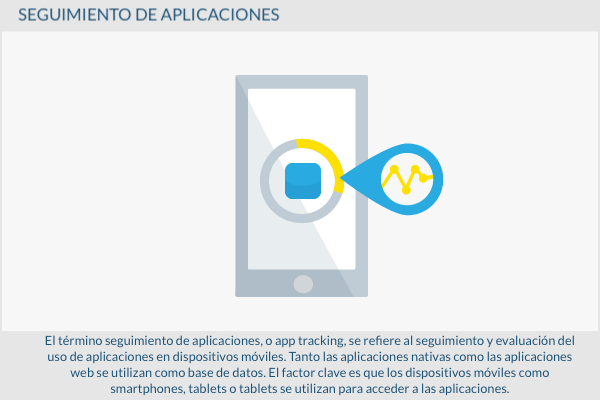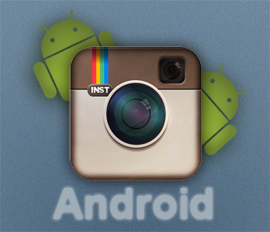The term app tracking, or app tracking, refers to the monitoring and evaluation of the use of apps on mobile devices. Both native apps and web apps are used as databases. The key factor is that mobile devices such as smartphones, tablets or tablets are used to access the apps. The possible data are the number of downloads, the type of device used, operating systems, languages and mobile operators, as well as numerous events throughout the actual use of the apps.

General information
The tracking and analysis of usage statistics is of interest to both the publishers who develop an application and the marketers who do the marketing for it. Mobile app tracking provides information to both parties about how many times an app has been downloaded and how users use it. The goal is to review performance and popularity. Based on this data, the app can be optimized for different operating systems and devices in particular. These results are also beneficial for future developments and potential marketing campaigns (See App Marketing).
The increased interest in app tracking methods is due to the greater use of mobile devices and the greater number of apps. According to estimates, in 2017 around 4 million apps were downloaded in Spain alone [1] . Service providers such as Google or Apple now offer suitable development environments (SDK - Software Developer Kit) to implement app tracking. In this way, you can not only examine the number of downloads, but also their active use.
The areas and functions most visited and used by users tell developers where optimization potential exists and where parts of the app are well accepted. Usability testing is usually done. Users become testers and through a study of tester behavior the apps can be specifically optimized. At the same time, the data is used to aid in ad placement.
characteristics
You can detect several different indicators using app tracking. In individual cases, the type of information you receive depends on the tracking system used. Some of the basic stats are listed below:
- Number of installations.
- Mobile devices.
- Operating systems (Android and IOS, etc.).
- Mobile device operator.
- Version of the app data.
More data can be collected with certain types of tracking solutions:[2]
- Unique users and new users.
- Events such as clicks on buttons and menu items.
- Screens and screen size.
- Lifetime of the app.
- Conversions (for example, buying a product with a shopping app).
- Error messages and faults.
App tracking tools
There are numerous app tracking tools on the market[3] Some are free and others are paid. The range of functions increases with increasing investment, but there are also solutions that are free and offer many features.
- App Annie.
- Appfigures.
- Alluvium.
- Mobile app tracking from HasOffers.
- Atamine.
Some tools should be considered integrated solutions. This means that app tracking is not a primary function, but web tracking and analysis can also be done on other resources.
- Google Analytics tracking for mobile apps.
- Piwik Open Analytics Platform.
- Etracker.
- Webtrekkk.
- Econda.
Importance for mobile device marketing
Equivalent to web analytics, app tracking can be a very valuable database for app developers and marketers. Regardless, the monitoring and analysis of app usage is only useful if other factors are taken into account, for example, the design and usability or optimization of the app store and many other aspects of mobile device marketing.
Today, monitoring is still associated with a relatively large amount of effort and requires specialized technical knowledge, especially when it comes to development environments and frameworks. Despite everything, the current trend indicates that app monitoring tools, development environments and frameworks are used more and more. Google, for example, integrated tracking into the cost-free Google Analytics software. If you already use analytics tracking, now you can also install it on mobile devices. This is an important advantage when the app is basically an extension of the portfolio and not a separate business model.
Apple offers several options for tracking apps. Apple Identifiers for Advertisers (IFAs) are designed specifically for ad placement, while Identifiers for Providers (IFVs) can track the number of downloads and other statistics. And this is quite a delicate point. Mobile devices are known for the fact that user behavior can be almost completely tracked. It is not clear to what extent users reject it. But it can be assumed that most users would not accept it if they knew how to avoid it. Certain services still require users to agree to the terms of use before using them to the detriment of data protection and privacy. This applies to both Apple and Google. When users don't want to be tracked, they usually have to independently search for the appropriate settings.






